|
Sandro Botticelli.org, welcome & enjoy!

|
|
Here are all the paintings of Sebastian Stoskopff 01
| ID |
Painting |
Oil Pantings, Sorted from A to Z |
Painting Description |
| 75882 |
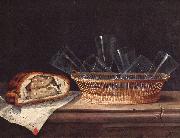 |
Korb mit Glasern |
Date Deutsch: um 1640
English: c. 1640
Medium Oil on canvas
Dimensions Deutsch: 50 x 64 cm
cyf |
| 74466 |
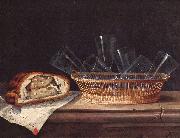 |
Korb mit Glasern, Pastete und einem Brief |
c. 1640
Oil on canvas
50 X 64 cm
cjr |
| 74956 |
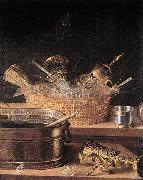 |
Metallgefabe und Glaser in einem Korb |
Metallgefabe und Glaser in einem Korb
ol auf Leinwand, 65 x 54 cm
cjr |
| 76546 |
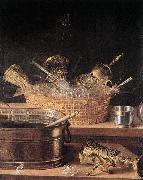 |
MetallgefaBe und Glaser in einem Korb |
Öl auf Leinwand, 65 x 54 cm
Date undated, prior to 1657
cyf |
| 20249 |
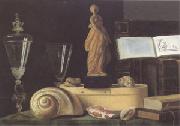 |
Still Life with a Statuette and Shells (mk05) |
Wood,201/2 x 28 1/2''(52 x 73cm) |
| 20251 |
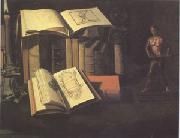 |
Still Life with Books Candle and Bronze Statue (mk05) |
Canvas,20 x 27''(51 x 69 cm)Acquired in 1982 |
| 63702 |
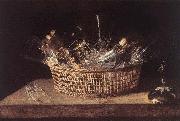 |
Still-Life of Glasses in a Basket |
1644 Oil on canvas, 51 x 62 cm Mus?e de l'Oeuvre de Notre Dame, Strasbourg The most neglected area of French 17th-century painting is that of still-life. It is still sometimes mistakenly assumed that the work of still-life painters was insignificant in their time compared with the grand designs of Claude and Poussin but, with one major exception, all the main still-life painters worked in Paris; they were not provincial artists working in obscurity away from the mainstream of the development of painting. The exception was the obscure S?bastian Stoskopff, whose oeuvre has only recently been reconstructed. He was isolated in Strasbourg, the main town of the province of Alsace, which did not come under French rule until 1648 (although Strasbourg itself was not occupied until 1681). In the Middle Ages the artistic traditions of Alsace had their own flavour, being subjected to influences from central Europe, Italy, and, to a lesser extent, France. Stoskopff, however, was influenced by none of these traditions, being a totally isolated painter working in a style verging on the naive. Influences from such German still-life painters as Georg Flegel are discernible, but they merely be caused by the similarity of subject-matter rather than by any stylistic affinity. Stoskopff art's is unique. One of the best examples of his work is the Still-Life of Glasses in a Basket. The tonality is monochrome, and the glasses in the basket are positioned in disarray. To this day, waitresses in restaurants in the region collect the empty drinking glasses by placing them heaped up in a basket rather than balancing them on a tray. There is therefore no complex iconography behind such a depiction; it is just a careful record of an everyday sight.Artist:STOSKOPFF, S?bastien Title: Still-Life of Glasses in a Basket Painted in 1601-1650 , French - - painting : still-life |
| 51004 |
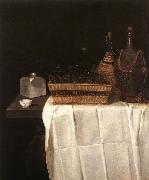 |
Still-Life with Glasses and Bottles |
1641-44
Oil on canvas,
122 x 99 cm |
| 84546 |
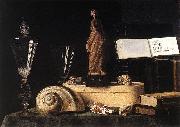 |
Still-Life with Statuette and Shells |
Date first half of 17th century
Medium Oil on wood
Dimensions Height: 52 cm (20.5 in). Width: 73 cm (28.7 in).
cjr |
| 88385 |
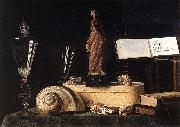 |
Still-Life with Statuette and Shells |
first half of 17th century
Medium Oil on wood
cyf
|
| 51005 |
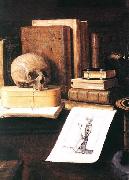 |
The Great Vanity |
1641 Oil on canvas |
|
|
| Sebastian Stoskopff
|
| Strasbourg 1597-Idstein 1657
was an Alsatian painter. He is considered one of the most important German still life painters of his time. His works, which were rediscovered after 1930, portray goblets, cups and especially glasses. The reduction to a few objects, which is characteristic of early still life painting, can again be recognized in Stoskopff's painting. His chief works hang in Strasbourg and in Saarbr??cken. Sebastian Stoskopff was born in 1597 in Strasbourg. His father was employed by the city since 1590 and acted as a mounted courier or royal escort, driving a one-horse-carriage. In 1614, Stoskopff's father asked the Strasbourg council for help for his 17-year-old son. He wanted him to be able to learn the craft of painting, since Sebastian had already been extremely talented in drawing and painting since he was 15. The council agreed to provide their support and probably sent the young artist at first to the Strasbourg painter and copper engraver, Friedrich Brentel. However, he only learned how to further refine his drawing and was not, as hoped, introduced to the art of painting. In 1615, Stoskopff's father died and his widowed mother went to the Strasbourg council once again to ask for support for training from a recognized painter. Stoskopff was then sent to Daniel Soreau, a painter who was active in Hanau. In the beginning, Soreau was not very enthusiastic, since he usually chose his apprentices from among his relatives and close friends. However, he finally complied with the request of the council and assured them that would "make an Albrecht Derer of this apprentice". There is not a single definite picture by Daniel Soreau existing. It is only possible to draw conclusions about how well the master passed on his artistic skills to his students through the works of his sons, other apprentices of his workshop and through Stoskopff's works. After Soreau's death in 1619, Stoskopff took over his workshop with the apprentices, as well as his function as the master. One of the apprentices was Joachim von Sandrart, who later became a successful painter and who wrote the first important work on the history of art in the German language: "Teutsche Academie der Bau-, Bild,- und Malerey- Kenste". This work contains descriptions of the lives of earlier and contemporary artists, including descriptions of the time in Hanau with his master, Sebastian Stoskopff. After his attempt to get permission to settle in Frankfurt failed, Stoskopff went to Paris. He stayed there from about 1622 until 1639, which can be reconstructed from indirect reports and property inventories of Parisians. His first works in larger format were also created here, such as "Summer" or "Winter" (now both in Strasbourg).
|
|
 All the Sandro Botticelli's Oil Paintings
All the Sandro Botticelli's Oil Paintings

Supported by oil paintings and picture frames

Copyright Reserved
|

